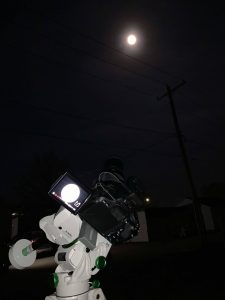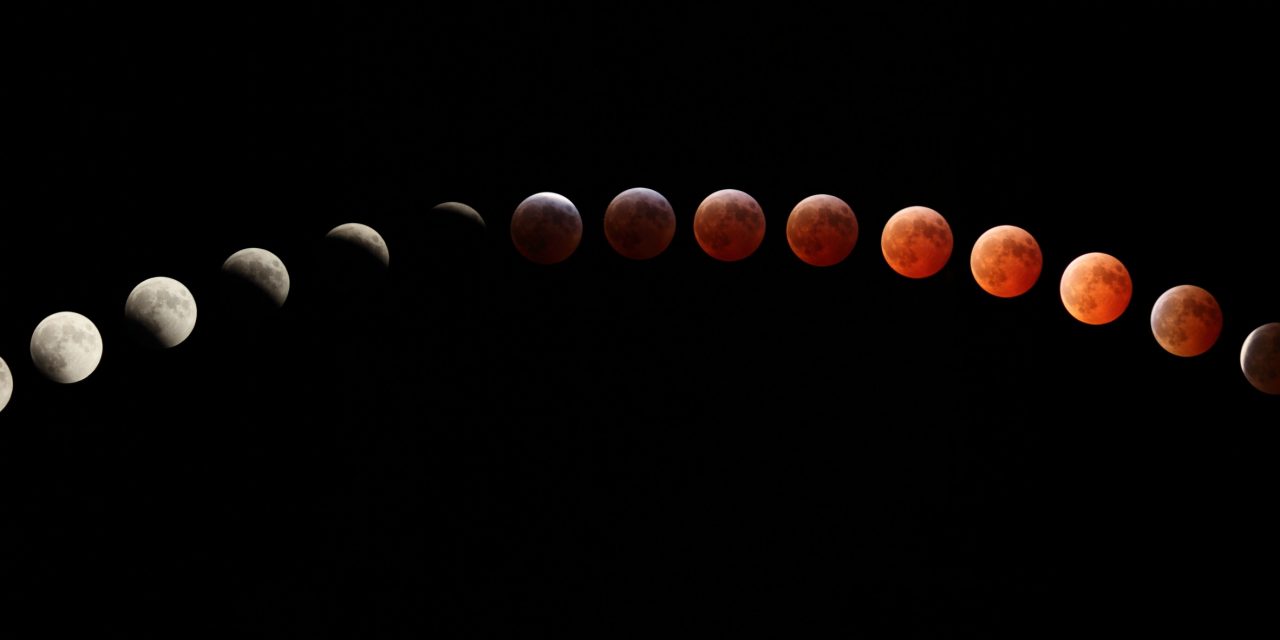
While not exceedingly rare, lunar eclipses are an exciting thing to witness and a favorite subject matter for astrophotographers to capture in a variety of ways.

All set up for a night of astrophotography.
Submitted by Pastor Eric Jensen
If you’re a night owl, you may have noticed something peculiar going on with the moon early Friday morning. A shadow covered its face before the full moon turned a dark red as the Earth’s shadow was cast on its surface, causing a total lunar eclipse. While not exceedingly rare, lunar eclipses are an exciting thing to witness (even if you just poke a sleepy head out the window for a brief look). But I had something different in mind for the eclipse Thursday night. Around 11:00p, I set up a telescope mount (a piece of equipment that can track the movement of the stars and planets through the night sky) and attached my camera in the hopes of capturing a series of photographs throughout the various phases of the eclipse.
Astrophotography can sometimes be a bit of a lonely hobby, but it’s very rewarding. There are so many wonderful parts of our universe hidden overhead, waiting for those with the tenacity (and the caffeine) to look for them. I managed to grab just over a hundred images of the whole eclipse sequence before a thunderstorm sent me inside for the night, but that was more than enough to arrange the picture I’d hoped to capture. Beginning with the soft edge of the Earth’s shadow, and on through to the peak of the eclipse, you have to adjust the camera settings as the light changes.
The moon turns red during Lunar Eclipses, because a small amount of the Sun’s light is refracted through our atmosphere around the edge of the planet. The blue light is absorbed, but our atmosphere allows some of the yellow and much of the red through (the same effect happens at sunset). Whether or not you stayed awake into the wee hours, I hope you enjoy this glimpse into our skies!

